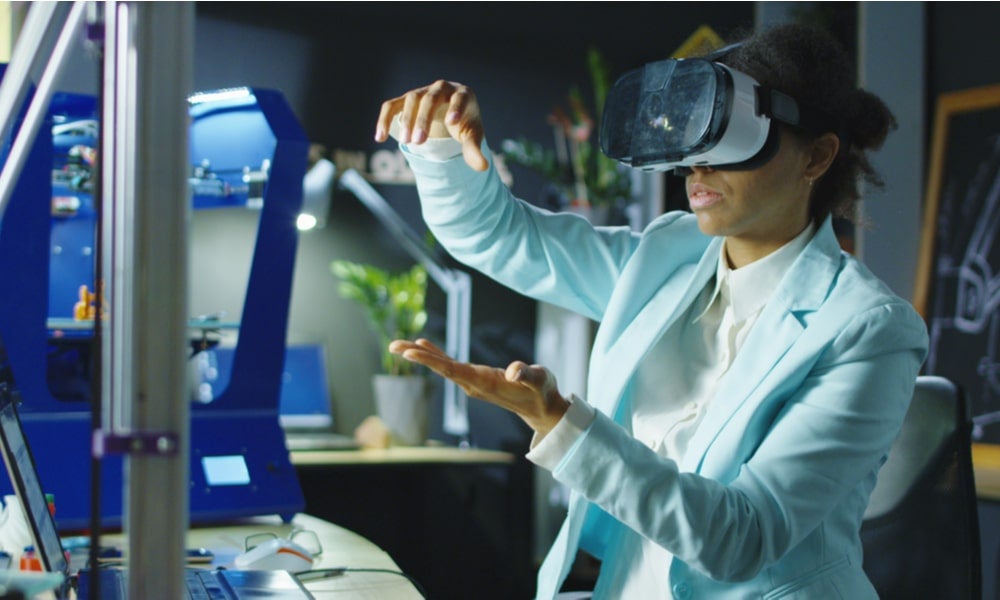Should universities try to capture more value from their research?
This is why universities need to take a closer look at the value they are extracting by commercialising their patents and intellectual property
This article is republished with permission from Knowledge @ Wharton, the online business journal of the Wharton School at the University of Pennsylvania, which owns the copyright to this content.
A pair of newly published research papers co-authored by Wharton Management Professor David H. Hsu benchmark explore commercialisation drivers of academic science. The papers find that university research has produced pathbreaking innovations across many disciplines, many of which have been commercialised successfully. Yet, on average, universities capture 16 per cent of the value they help create through licensing revenues or equity stakes in the start-ups their research spawns. Furthermore, some researchers and universities are much better able to commercialise their discoveries compared to others, even holding constant the discovery itself.
The first research paper, which Hsu wrote with Po-Hsuan Hsu, Tong Zhou and Arvids A. Ziedonis, is titled “Benchmarking U.S. University Patent Value and Commercialisation Efforts: A New Approach” and was published in Research Policy. The second paper, “Revisiting the Entrepreneurial Commercialisation of Academic Science: Evidence from ‘Twin’ Discoveries,” co-authored with Matt Marx, is forthcoming in Management Science.

The results suggest that universities with policies and resources devoted to commercialisation efforts, aided by academic staff with commercialisation experience and which are more interdisciplinary, are much more successful at translating research for commercial outcomes. Consequently, Hsu and his co-authors make a case for universities to take a closer look at the value they are extracting by commercialising their patents and intellectual property.
Over the past 40-50 years, basic research at corporate R&D labs has seen a steep decline, while academic research at universities has grown. “We’re no longer in the age of basic research from AT&T/Bell Labs, GE Labs, Kodak and DuPont – all that is business history,” Hsu said. “On the other hand, the modern U.S. research university tends to be increasingly interested in translating academic research into something that makes a social impact, with associated economic development considerations. That’s a big shift.”
Hsu pointed to some of the reasons driving the shift in research-based innovations and discoveries from corporate R&D labs to universities. “One is a recognition by universities that their contribution to society can come from many sources beyond the traditional ones of originating basic research and their teaching and training functions. Increasingly, research universities are also interested in demonstrating how some of that research can be used productively by society through translational work,” he said.

Another driver is the financial returns that many universities collect through the technologies they help develop. University-based innovations have been instrumental in game-changing technologies spanning areas such as autonomous vehicle technology, encryption algorithms, immunotherapy and gene therapies for cancer, and even in accelerating the research for developing COVID-19 vaccines. “We’re talking about not just incremental innovations that could be done elsewhere, but rather more fundamental research at universities,” Hsu said.
Benchmarking efforts
U.S. universities grapple with the question of how well they are doing in commercialising their research relative to how well they should be doing, said Hsu. For example, in a 2018 survey by the Association of University Technology Managers (AUTM) of U.S. university technology transfer operations, the 198 university respondents indicated they had filed more than 17,000 patent applications and received about 7,600 patent grants that year. Between 1991 and 2010, the AUTM survey participants had received approximately $9.56 billion in licensing revenues. But Hsu notes that it is difficult to conclude based on these figures whether U.S. research universities are doing well in value capture relative to their intellectual property assets.
Read more: How collaboration in a sandbox is helping to save Indian tigers
“The [first] paper on benchmarking tries to estimate how much value universities capture, relative to a notional benchmark of private sector ownership,” he said. “If corporations in the private sector owned the same or similar intellectual property as that held by universities, how does university value capture compare to that private sector benchmark?” The paper’s authors achieve that with an “event study,” where they estimate the value that would accrue to a corporation in terms of its stock price after it secures patents.
The ‘twin’ discovery framework
With the “focal point” on what commercial value university administrators would like to capture from their research, the logical next step would be to equip themselves with the requisite policies and resources to facilitate those goals. Here, the second paper that Hsu co-authored delves into the success factors for commercialising academic science via start-up formation. The paper notes that some prominent examples of products commercialised in this manner from academia include Google’s PageRank search algorithm, E Ink’s electronic paper, RSA’s cryptography algorithm, and Genentech’s recombinant growth hormone.

A large obstacle to studying entrepreneurial commercialisation success factors is that university technology is typically much more basic and embryonic as compared to applied research, and so identifying academic discoveries which could have the potential for commercial translation (“latent commercialisability”) is tricky. To get around this, the authors develop an algorithmic approach to identify and compare the commercialisation path of approximately 20,000 “twin” scientific discoveries, a circumstance in which two academic teams independently come up with the same or very similar academic discovery, but one team proceeds to commercialisation while the other team does not.
Using this twin discovery design, the research identified two aspects that shape the commercialisation landscape. One is the degree to which an academic team is interdisciplinary. The second is the presence of a “star commercialiser,” said Hsu. “Interestingly enough, it’s not the star academic that is correlated with commercialisation – it’s the star commercialiser, those with substantial prior experience bringing products to market via start-up formation.” An example of a star commercialiser is MIT Institute Professor Robert Langer, who is highly accomplished in both academia and scientific translation, having co-founded over 30 start-ups, including COVID-19 vaccine maker, Moderna.
Read more: Share in our research expertise for the benefit of everyone
Perhaps the biggest surprise in the results, according to Hsu, is that once latent commercialisability was controlled in the analysis, commonly accepted resource factors shaping entrepreneurial commercialisation were statistically unimportant. Local venture capital activity and the scientific prominence of both the academic institution and of the researchers did not have explanatory power in predicting entrepreneurial commercialisation, after controlling for the nature of scientific discovery via the twin discovery design.
A higher standard
According to Hsu, research at universities is of “a higher standard” than at corporations, and that claim is proven by the number and nature of patents awarded to each group. “University patents are punching way above their weight in terms of the metrics that we use,” he said. “In terms of the quality and quantity of inventions, they are much more basic, much more original, and have many more forward citations. There are many more claims. This is all true of university patents as compared to corporate patents.”
Yet, university patents account for much less realised revenue, compared to the value corporations would have captured if they had held the identical intellectual property portfolio, Hsu said. “The inventions that are coming out of universities are much more important relative to corporate patents. Yet the universities are taking out much less in terms of value.”

Hsu added: “A lot of times we don’t know whether a university discovery is just a non-starter commercially because it’s way too basic, or we just didn’t try hard enough [to commercialise], or if that same discovery in a different university environment or in the hands of a different academic team would have gone on to be hugely successful.” The second paper illustrates a method to address these challenges.
Key takeaways
Hsu noted that the key takeaway of the first paper is not necessarily whether universities should be capturing more than 16 per cent (on average) of the value their research helps create, but the opportunity it opens for them to more closely examine their options. “The goal of the benchmarking approach is to provoke a conversation among university administrators, technology transfer officers and policymakers regarding commercialising university IP,” he said.
For instance, university officials may want to more critically discuss and assess the tradeoffs associated with moving that number up or down. This might involve selecting and incentivising university researchers (as the results of the second paper suggest), as well as formal patent policies and informal university culture associated with commercialisation. It might even involve discussions about the source of research funding (federal government vs. corporate sponsorship). All these discussions should take place without losing sight of research universities’ longer-term and societal contributions, Hsu said.
Read more: How Singapore is improving food innovation, sustainability and productivity
“You are now in some sense taking the place of Bell Labs in the innovation ecosystem, taking funds from the federal government, from philanthropy and from student tuition,” Hsu said, as if he were addressing an audience of university administrators. “You have many missions, including education, research and dissemination of research, but on the pillar of value creation and value capture as benchmarked against what private corporations would realise on average, universities in the U.S. are collecting 16 per cent of the value capture. How do you feel about that figure? Should you be trying to dial that up? Or down?” Those questions would have to be viewed against the backdrop of the societal mission of universities, which “encompasses much more than trying to capture private value,” he added.
